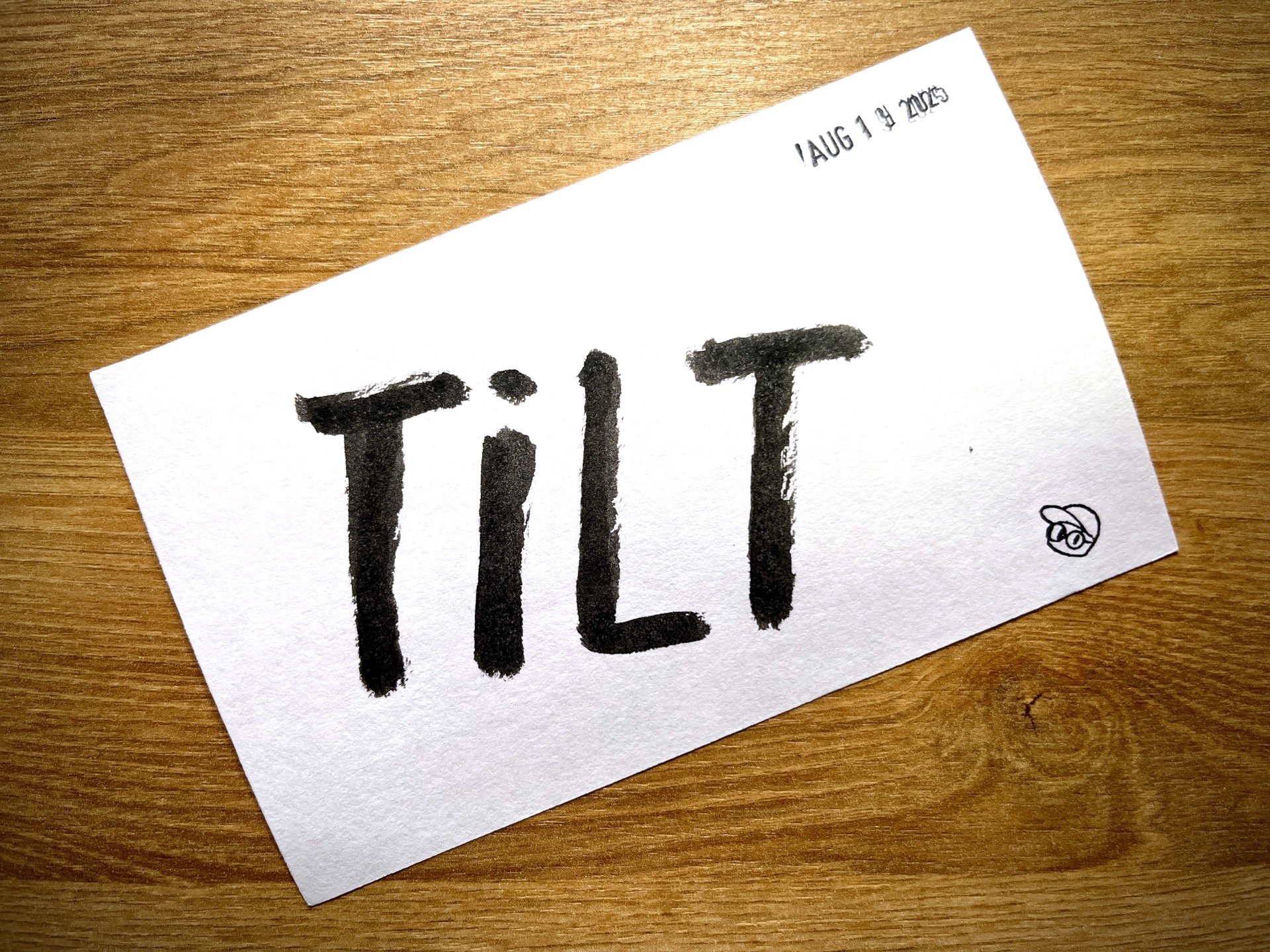If you’ve ever watched someone sketch, paint, or design—whether on paper or a screen—you’ll notice something almost universal. They tilt.
The canvas shifts. The paper rotates. The head leans sideways. Sometimes it’s subtle, like a small angle of the wrist. Other times it’s dramatic: the entire digital canvas in Photoshop or Procreate whirling like a lazy Susan. Artists will even flip their work upside down, as if looking through a magic mirror. Then they pause. Step back. Tilt their heads. Squint. They’re not just moving the canvas. They’re changing how they see.
Shift
That tilt changes the relationship between you and the work. Lines that seemed fine a moment ago now look uneven. Shapes that felt balanced reveal their weight leaning too far to one side. The pixels haven’t changed. You have. It’s not about fixing the art right away—it’s about seeing it differently, so you know what needs fixing.
This isn’t just an art thing. You do it in the kitchen without realizing. Pour milk into a measuring cup and you’ll eventually crouch down so your eye is level with the line. From above, it looks fine. From eye-level, you might see you’ve overfilled it. Moving your entire self down to meet the milk where it meets the mark. A tiny tilt of your body turns guesswork into precision.
Squint
In software design, I first encountered a cousin of this idea over a decade ago: the squint test. Literally squint your eyes until everything blurs. If your design still makes sense—if the shapes hold, if the text blocks into a readable rhythm—then it works. If it all turns into mush, then no amount of polish will save it.
I use the squint test constantly. Not just for visual layouts, but for code. When I squint at a screen of text, I’m not reading the characters. I’m looking at the shape of the thing. Placement. Flow. If it looks dense, tangled, overwhelming—that’s a warning. Code that feels heavy on the eyes usually feels heavy in the hands. That’s my signal to refactor.
Tilts by way of squint: a sideways glance that reveals the truth head-on can’t.
Frame
Borrowing from drawing workflows, I’ve built my own toolbox of tilts. Different ways to frame and reframe the problem.
Sometimes it’s digital: I’ll take screenshots of Figma files, mockups, documents, spreadsheets, even code. I’ll zoom way in until the pixels blur, then zoom way out until everything collapses into blocks.
Sometimes it’s physical: I’ll print things. Scribble on them. Fold the page so sections overlap. Make it translucent, photocopy it, cut it up, tape pieces together. Each change of format changes the frame—revealing edges, patterns, or gaps I couldn’t see before.
It’s the same instinct you see in movies or TV when a director raises their hands, thumbs and forefingers forming a rectangle. They’re not building anything in that moment—they’re framing it. Blocking out the noise. Asking: Does this shot work? What belongs inside, what needs to be cut away?
That’s what a frame does. It’s not just a border. It’s a way of forcing clarity—of saying: look at it like this for a moment. And sometimes, that shift in framing is all it takes for the work to finally speak back.
See
Because so often, problems don’t yield to brute force. They don’t open up by staring harder, or pushing through from the same angle. They open up when you shift the frame. When you tilt.
Sometimes that means tilting your head. Sometimes it means tilting the work. Sometimes—if you’re lucky—it means tilting the entire world.
Maybe what you need isn’t more effort. Maybe it’s more angle. Maybe clarity doesn’t come head-on—it slips in sideways, like light through a cracked door. Maybe tilt is the cure for tunnel vision, exposing the false certainty of straight-ahead focus.
Tilt until the thing warps. Until excuses crack. Until you can’t hide from what’s crooked anymore.
Whatever it takes to see better, clearer, deeper—for what it is, and for what it could become.
